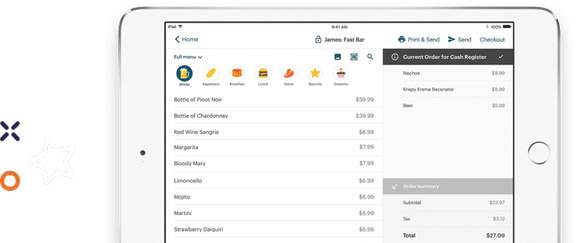Imagine a situation where you could consistently save up to 5% on your weekly labor costs. Sound like a pipe dream? For some restaurant managers it might be, but not for a progressive manager like you. You already understand that the data your business generates can be used to make your business more profitable and efficient. After all, analytical skills are one of the top 3 restaurant management skills you will need in 2017 and beyond!
When it comes to saving on labor costs, the data that your POS system and scheduling software generate can help you determine the optimal number of staff members you need at any given time.
Here are three data-backed scheduling techniques – why they work and how they are calculated. And, they’re proven to help you save on labor costs.
1. Sales Per Man Hour (SPMH)
To get a quick and accurate picture of your labor effectiveness, sales per man hour (SPMH) is a great technique to employ. By calculating how much revenue is generated by a certain number of employees in an hour, you can optimize the staff needed to match your hourly revenue. The higher the productivity of your team, the lower the hours – which results in a lower labor percentage.
To determine your restaurant’s SPMH, divide your projected gross revenue per hour by the total number of employees hours scheduled in the same hour. This information can easily be exported from your smart POS system. Once you have calculated your SPMH, work backwards to determine your optimal staffing levels. For example, if you calculate an SPMH of $70 at 10AM, you could determine you need 4 staff to hit a defined revenue target.
Calculate your own SPMH with the calculator below:
2. Forecasted Revenue
Forecasted revenue is one of the most common and accurate ways to ensure staffing at a labor cost percentage that is profitable for you. Revenue forecasting is accomplished by looking at your POS data from past periods to make an educated guess on what your future revenue will be on a weekly, daily or hourly basis. The best way to achieve this is to take your average sales over the last few defined periods (be it weeks, days or hours) to get the average value and then use this as the basis to plan your forecast. Here is a great template to build your forecast on.
If you have smart employee scheduling software you can automate these forecasts from your POS system and have them match them up with your target labor costs. This provides a clear picture of how many staff members you need to schedule in order to be under your labor cost targets. It also allows you to track how well you are sticking to your goals – the ultimate money-saver!
3. Units Sold
Staffing by units sold is a type of activity-based scheduling which allows a restaurant manager to tie their units sold to the amount of people they need to work in a given time frame. A unit could be a burger, a pizza or another significant item. This is mainly employed by QSRs and fast-casual restaurants, since the volume of food produced in an hour is much higher and pricing between menu items is more uniform than FSRs. That said, this type of scheduling can still be used by any of type of restaurant.
To schedule by units sold, you’ll need to know your projected units for the day at 15-minute intervals. Once you have that forecasted, you’ll need to define how many staff members you require per interval of X units sold. For instance, a manager might have a formula that says: selling 20 burgers at a 15-minute interval would require 3 line cooks and 2 cashiers. Then, for every additional 20 burgers sold, an additional line cook and cashier are required. Knowing projected units and requirements per units sold, makes it easy to add more staff for busy times.






